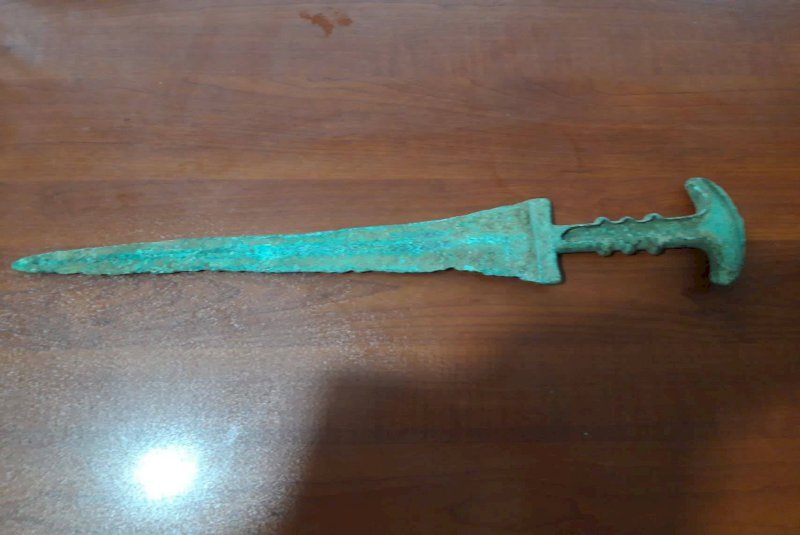Iron Age dagger discovered in northern Iran

TEHRAN – Iranian authorities have recovered an Iron Age dagger from a smuggler in Ramsar, northern Mazandaran province, a senior police official in charge of protecting cultural heritage said on Wednesday, CHTN reported.
The accused person was traced and finally arrested after police received reports from cultural heritage aficionados and local people about his misdeeds, Mohammadreza Kordan added.
The culprit was surrendered to the judicial system for further investigation and trial, he noted.
Sandwiched between the towering Alborz mountain range and the Caspian Sea, Mazandaran has a rich yet turbulent history. An early civilization flourished at the beginning of the first millennium BC in Mazandaran (Tabarestan).
Its insecure eastern and southeastern borders were crossed by Mongol invaders in the 13th and 14th centuries. Cossacks attacked the region in 1668 but were repulsed. It was ceded to the Russian Empire by a treaty in 1723, but the Russians were never secure in their occupation. The area was restored to Iran under the Qajar dynasty.
The northern section of the region consists of lowland alongside the Caspian and upland along the northern slopes of the Alborz Mountains. Marshy backlands dominate the coastal plain, and extensive gravel fans fringe the mountains. The climate is permanently subtropical and humid, with very hot summers.
Iron Age is in fact final technological and cultural stage in the Stone–Bronze–Iron Age sequence. The date of the full Iron Age, in which this metal, for the most part, replaced bronze in implements and weapons, varied geographically, beginning in the Middle East and southeastern Europe about 1200 BC but in China not until about 600 BC, according to the Encyclopedia Britannica.
Although in West Asia iron had limited use as a scarce and precious metal as early as 3000 BC, there is no indication that people at that time recognized its superior qualities over those of bronze.
ABU/MG
Leave a Comment